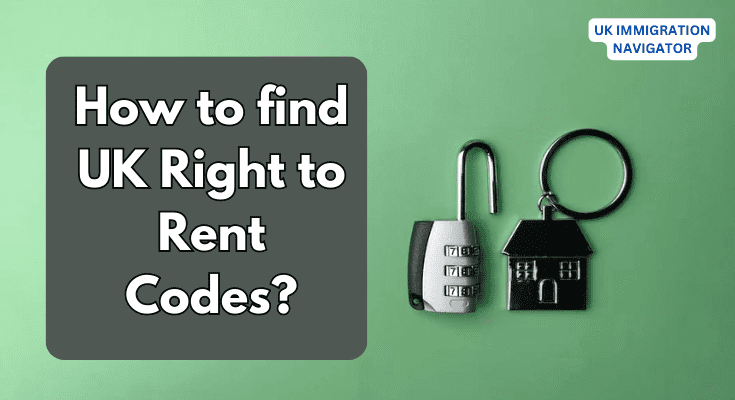Introduction
Navigating the world of property rental can be complex, especially when dealing with regulations such as the UK Right to Rent Codes. To ensure a smooth rental experience while staying compliant, it’s essential to have a clear understanding of these codes. In this guide, we’ll delve into the specifics of how to find UK Right to Rent Codes, making the process straightforward and stress-free.
Table of Contents
How to Find UK Right to Rent Codes?
Finding UK Right to Rent Codes involves several key steps that need to be followed meticulously. By following these steps, you can ensure that you’re adhering to the regulations and requirements set by the UK government.
Understanding Right-to-Rent Regulations
Before diving into the details, it’s crucial to understand what Right to Rent regulations entail. These regulations require landlords to check the immigration status of potential tenants and ensure that they have the right to rent property in the UK. This measure is in place to prevent illegal immigration and ensure that landlords are not inadvertently renting to individuals who don’t have the legal right to reside in the UK.
Accessing the UK Government’s Official Guidance
The first step in finding UK Right to Rent Codes is to access the official guidance provided by the UK government. Visit the official government website or search for “UK Right to Rent Codes” on a search engine. Look for the guidance section that provides detailed information about the process, requirements, and codes.
Read Also:
Identifying Acceptable Documents
The guidance will outline the acceptable documents that tenants can use to prove their right to rent. These documents include passports, residence permits, and other forms of official identification. Make sure to familiarize yourself with the list of acceptable documents to ensure you’re following the correct procedure.
Checking the Tenant’s Documents
When a tenant presents their documents, it’s important to check them carefully. Verify the authenticity of the documents and ensure they match the tenant’s identity. Look for any expiration dates on the documents and take note of them.
Recording the Check
As a landlord or agent, it’s crucial to record the Right to Rent check. This can be done by taking copies of the tenant’s documents and noting down the date of the check. Keeping accurate records is essential for demonstrating compliance in case of any audits or inquiries.
Staying Updated on Changes
Right to Rent regulations may evolve. It’s essential to stay updated on any changes or updates to the regulations or codes. Subscribe to official government newsletters or notifications to receive timely information.
Frequently Asked Questions (FAQs)
How often do I need to conduct Right to Rent checks?
Right to Rent checks need to be conducted for every new tenant before they move in. Additionally, if a tenant’s immigration status changes during their tenancy, a follow-up check is required.
Can I delegate the Right to Rent check to someone else?
Yes, you can delegate the check to an agent or representative who is responsible for the tenancy. However, as the landlord, you remain ultimately responsible for ensuring compliance.
What happens if I fail to conduct Right to Rent checks?
Failure to conduct Right to Rent checks can result in fines and legal penalties. It’s crucial to adhere to these regulations to avoid any legal repercussions.
Are there any exemptions to Right to Rent checks?
Yes, there are specific exemptions, such as accommodation provided by local authorities or social housing providers. Make sure to familiarize yourself with the list of exemptions outlined in the official guidance.
Can I accept photocopies of documents for the check?
No, you should only accept original documents. Photocopies or scanned copies are not considered valid for the Right to Rent check.
Is there a helpline for queries related to Right to Rent?
Yes, there’s a dedicated helpline provided by the Home Office for any queries or concerns related to Right to Rent checks.
Conclusion
In conclusion, navigating the process of finding UK Right to Rent Codes doesn’t have to be overwhelming. By following the step-by-step guide outlined above, you can ensure that you’re conducting the necessary checks and staying compliant with the regulations. Remember that staying informed and up-to-date is key to a successful rental experience for both landlords and tenants.
